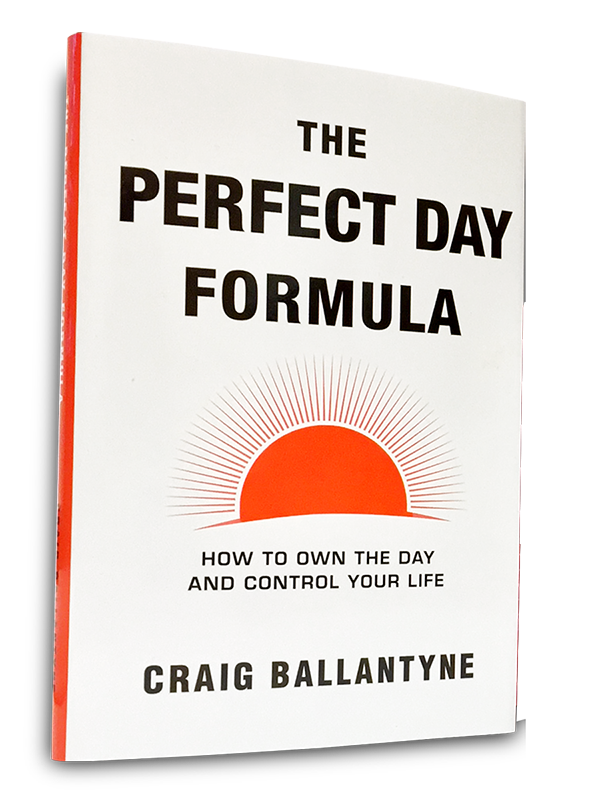6 Ways to Rein in Your Digital Activity

Ultra-successful people “create” more time by using their 1,440 minutes a day effectively. They are purposeful about how they organize their days and weeks, what they take on versus what they delegate, and how they use technology.
One strategy ultra-successful people use to remain efficient is to spend a few minutes at the end of each day planning the next day. At the end of the week, plan the most important things you need to accomplish in the coming week, and then prioritize tasks so you can tackle the most important ones first.
To keep from falling victim to paralysis by analysis, know what the most important tasks are, and do them first.
Another successful strategy is to focus on one thing at a time. It is a myth that you can be more efficient by multitasking. Finish one task, and then move to the next one. Do the most important job first.
“If you chase two rabbits,
you will catch neither one.”
—Russian Proverb
The biggest time-wasters in our environment today are digital media, which includes e-mail and social media sites. Let’s look at how we can “create” more time by managing digital media better.
Manage Your E-Mail
E-mail is necessary, but must be controlled. According to The Washington Post, at the end of 2016, white-collar workers spent an average of 4.1 hours checking their work e-mail each day. That’s 20.5 hours each week and more than 1,000 hours each year, and it doesn’t include personal e-mail or social media.
Many time-management experts recommend setting aside two times each day to answer your e-mails—once in the morning and once in the afternoon. Do this instead of answering them as they come in. You can set up your out-of-office notification so that people who have e-mailed you will receive a response near those times. You can indicate what they should do if the matter is urgent.
Another way to increase your efficiency with e-mail is to write it in a way that increases your likelihood of receiving a response. The productivity app company Boomerang conducted a study of 350,000 e-mail threads to find out what type of e-mail closing tends to generate the most responses. Can you guess what the most effective e-mail sign-off is?
“Thanks in advance.”
Here are the results showing the rates of response various e-mail closings receive:
E-Mail Closing Response Rate
- “Thanks in advance” 65.7 %
- “Thanks” 63.0 %
- “Thank you” 57.9 %
- “Cheers” 54.4 %
- “Kind regards” 53.9 %
- “Regards” 53.5 %
- “Best regards” 52.9 %
- “Best 51.2 %
Here are additional tips for handling e-mail more efficiently.
Turn off all notifications, whether visual or audible, for your e-mail.
These distract us from what we are doing and make us check e-mail more often than we need to. According to Carleton University researchers, people now spend one-third of their time at the office and half of the time they work at home reading and answering e-mails. Thirty-percent of that time, the e-mails are neither urgent nor important.
If we can make our use of e-mail more efficient, we can save hundreds of hours a year to be more productive. That is exactly what successful people do. Set specific times of the day to check e-mail—maybe every three to four hours. Some successful people have an out-of-office message that essentially says, “I check e-mail only in the morning and evening. If you have an urgent need, please phone my office; otherwise, I will get back to you soon.”
Keep in mind that e-mail was not intended as an urgent means of communication, and it should not be used as such.
Follow the three Ds for e-mail, too: do, ditch, or delegate.
Either respond to an e-mail immediately, delete it, or forward it to the appropriate person or move it to the appropriate folder. Many of us fall victim to looking at an e-mail and leaving it in the inbox to do something with later. The e-mails continue to fill up the inbox and can get lost.
If you need to keep e-mails, set up separate folders with specific names to put them into, such as “Friends Follow” or “Anderson Project.” You can set up rules on most e-mail systems to automatically put e-mails in the proper folder.
Prioritize.
We often associate every message we receive with equal importance—at least initially—which leads to a prolific waste of time. Again, e-mail is not meant as an urgent means of communication. Follow the three Ds.
Think before you send.
The more email you send, the more you will get back. Do not CC, BCC, or imply that a response is needed unless mandatory. The more people you send to, the more consuming (and often useless) the emails you will receive back. Consider the “golden rule” of emailing: short one-line answers work best, not only for you, but also for those who don’t have time to read message.
Make your main point in the subject line.
Use the subject line to indicate the action that is needed, and use acronyms to shorten the subject line. For example, you could type, “SO the Anderson project? NOM.” In this case, “SO” stands for “Status Of,” and “NOM” stands for “No Other Message.” Here are additional acronyms that save space and time:
FYI: “For Your Interest” (or “For Your Information”). This tells your recipient that the content of your message is not urgent and doesn’t require a response.
RB xx/xx/xx: “Respond By” and specify the date.
NRN: “No response needed.”
Teach your team that you will be using acronyms, and ask them to reciprocate.
Unsubscribe from incoming e-mails you don’t want. There are programs to help you do this. For example, Email is an app that will work on both iPhone and Android devices. Keep in mind, that you will need to unsubscribe from some lists manually. But the obvious junk and spam e-mails, such as those containing adult content and prescription drugs, will go to your spam folder.
Other e-mails will come from places where you bought something in the past. By law, online vendors are required to include an “Unsubscribe” link somewhere in the e-mail, usually at the bottom. It will be tiny. Tap it, and you can remove yourself from the mailing list. You might be surprised to find that some brands have you on multiple e-mail lists, blasts for deals, updates, and more.
Use the “two-minute rule.” For the legitimate e-mails that are in your in box, use the “two-minute rule,” a concept from David Allen, the author of Getting Things Done. If an e-mail will take less than two minutes to read and reply to, then take care of it right away—even if it’s not a high priority.
The idea behind this is that if it takes less than two minutes to take action, it will take longer to read it and store it away to act on later than it would to take care of the task now. For e-mails that will take longer than two minutes to read or respond to, schedule time on your calendar to do so, or move the e-mail to the appropriate folder. Remember the three Ds: do, ditch or delegate.
Limit Your Social Media Browsing
The average person spends nearly two hours (approximately 116 minutes) on social media every day, which translates to a total of five years and four months over a lifetime. Teens now spend up to nine hours a day on social media platforms.
It might take some self-control, but if you want to emulate the habits of the ultra-successful, limit your use of social media. Pick specific times of the day—ideally in the evening—to visit your sites, and set a timer for how much time you want to spend on Facebook, LinkedIn, Snapchat, etc. You will be amazed at how easily you can get sucked in and spend hours on these sites. If you set a timer, it will keep you on track.
During daytime hours, focus on your most important tasks. Turn off your social media notifications so you are not distracted when people post another cat video or photo of their lunch.
#
By efficiently managing your e-mail and being responsible with your social media use, you can free up two to three hours per day. That adds up to more than 15 hours per work week. When you do this, you can be even more responsive to important e-mails and digital content.
Your Turn: Use Your 1440 More Wisely
- How much time do you think you spend reading and responding to e-mails each day? How much time do you think you should spend? Gain control over your e-mail by setting aside two time frames per day for answering e-mails instead of answering them as they come in. See how this goes. Adjust as needed. What will you do with the extra time you “create” by managing e-mail better?
- Which social media sites do you spend the most time on? How many hours per day do you spend on them? Do you consider it time well spent? If not, set a time limit for how many minutes you can visit a site at a time, or per day. Use a timer to stay within that guideline.
- How do you typically use social media (e.g. checking friends’ photos, reading Twitter highlights from the last day, etc.). ? To make the best use of your time, limit your social media browsing to a set number of activities/platforms. Write down these activities, and use the list as a guideline. If the activity you engage in does not support those activities, rein it in.
This chapter of “1440” by Randy Carver was published with permission by the author. To buy the entire book, visit Amazon.com.
 If you’re looking for an effective way to change some of your worst digital habits, then take a look at this FREE book…
If you’re looking for an effective way to change some of your worst digital habits, then take a look at this FREE book…
Author Craig Ballantyne has compiled the best productivity and habit change advice from CENTURIES to help you finally reach you goals.
And it’s FREE. What are you waiting for? Get your copy now.
